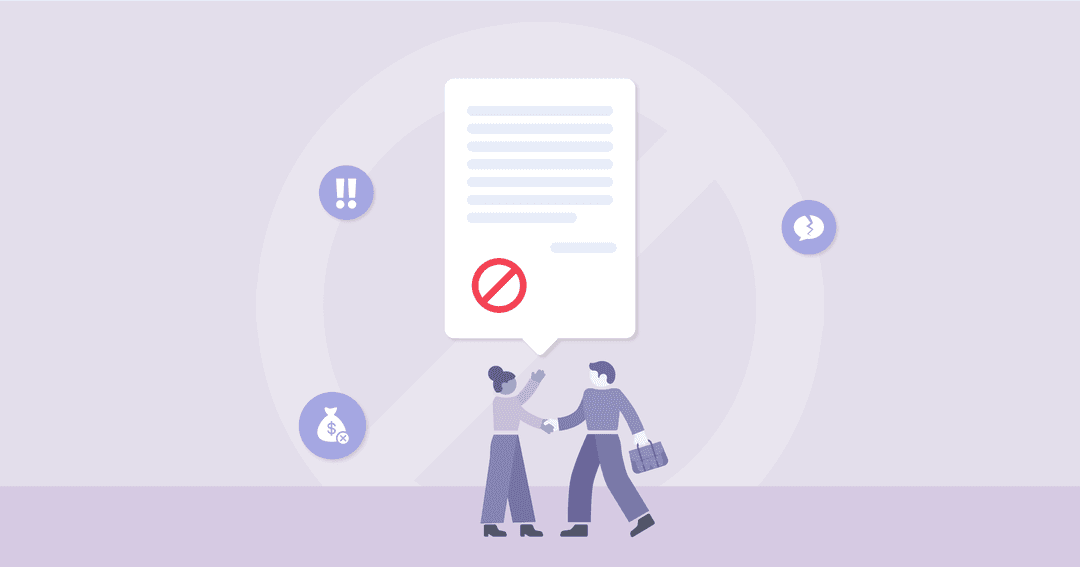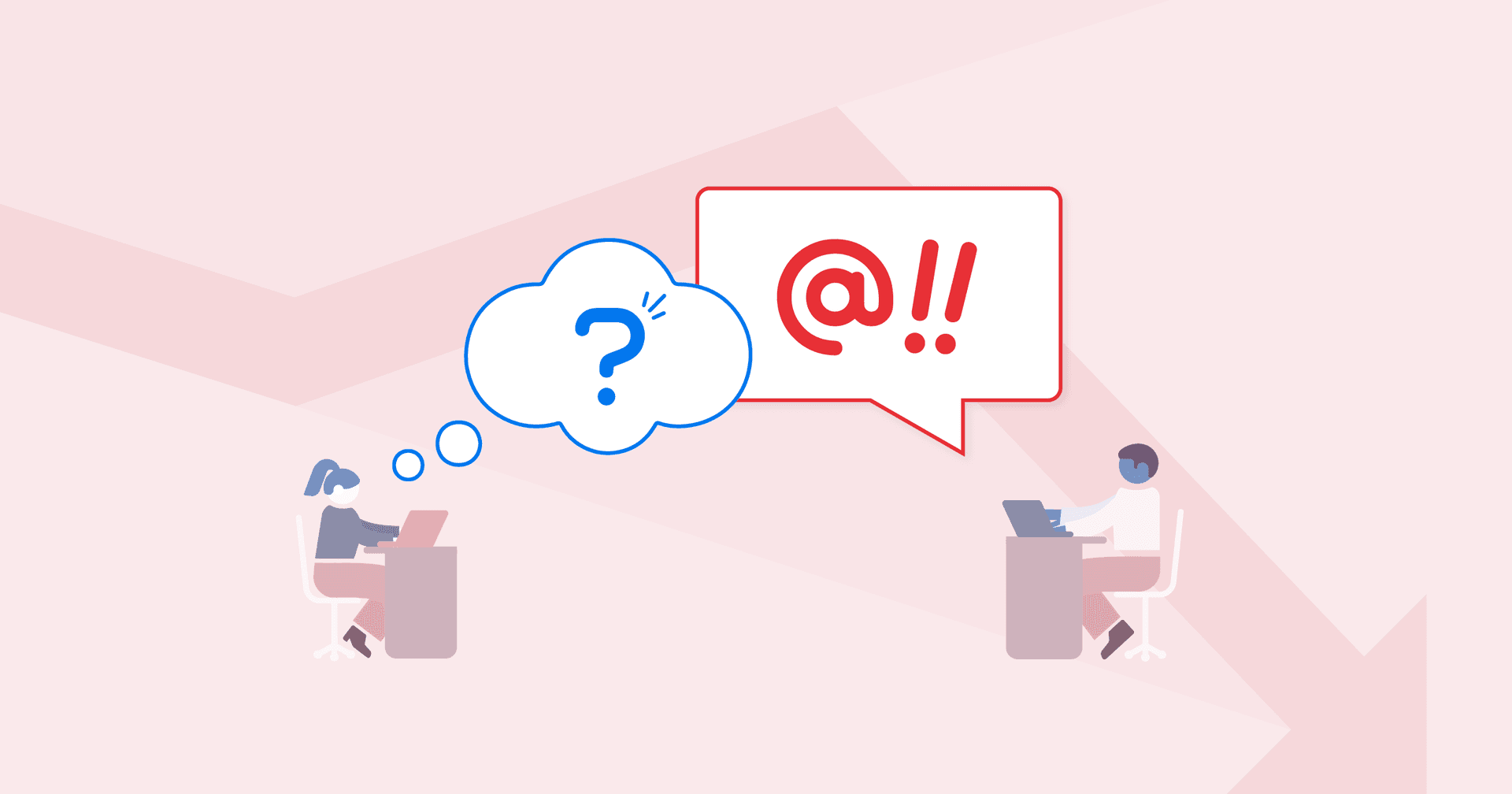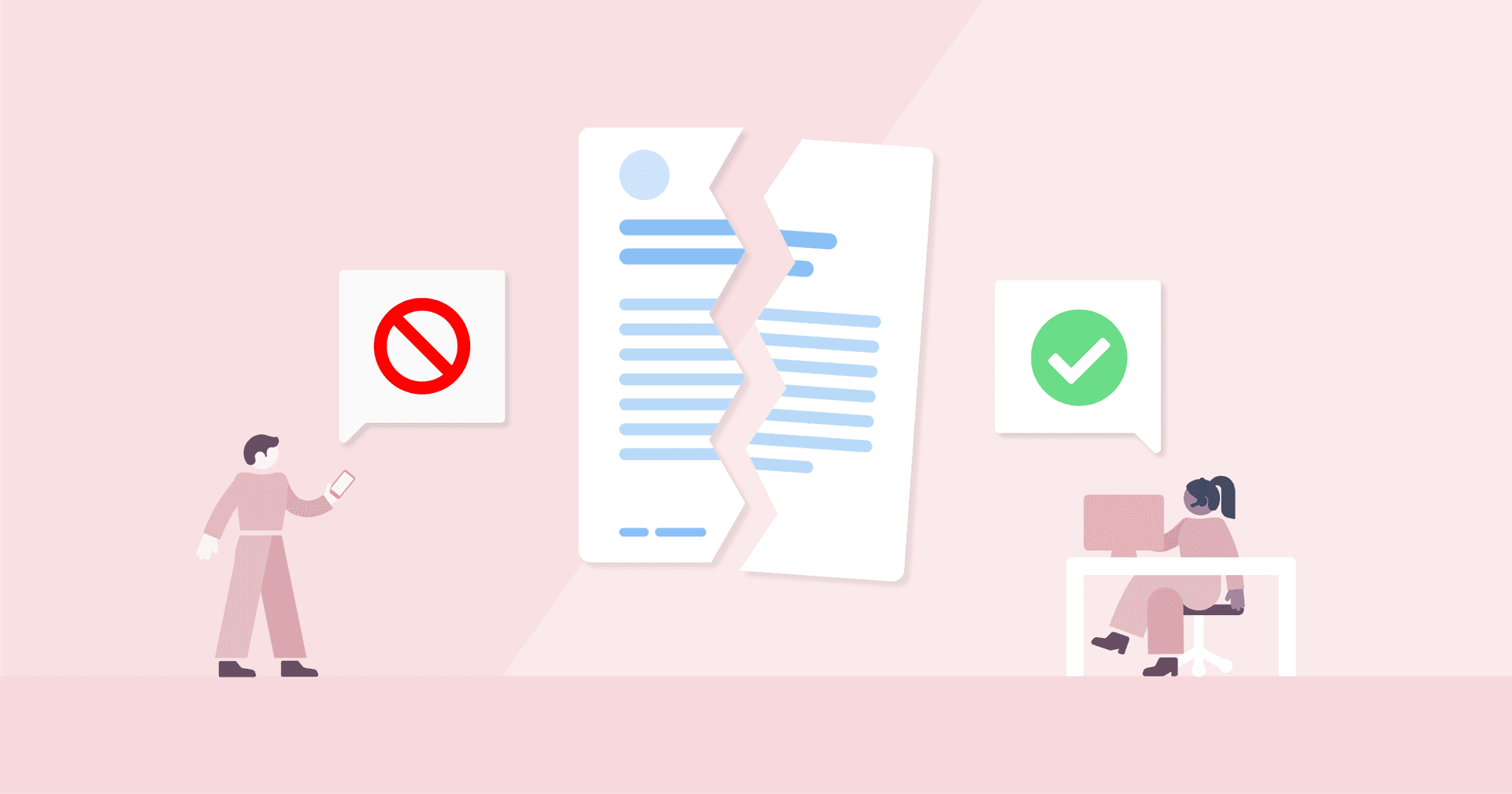Table of Contents
QUICK SUMMARY:
Terminating a relationship with a client when it no longer benefits your marketing agency involves a tactful approach. This guide outlines how to fire a client smoothly, focusing on maintaining professionalism and mitigating negative impacts. It offers practical advice to enhance your agency's future client interactions and growth.
Are you frustrated with a particular client?
Do you imagine how wonderful life would be without them?
Sometimes client relationships go sour. This can happen early in the relationship. But it may also deteriorate even after years of working together.
The thing is, once a client relationship goes bad, it begins to threaten your agency.
Over time, this negative client relationship affects your other accounts too.
That's why, sometimes, you have to make a tough call and fire a client. Considering a client exit interview could provide valuable insights for your agency's growth.
It's probably not something you find easy. So, in this post, we'll share a few ideas on how to fire a client. You'll learn how to do it peacefully, gracefully, and without unpleasant consequences for your agency.
How To Be 100% Sure That You Must Fire the Client
Let us make something clear:
Not every seemingly bad client relationship must end.
In fact, just because you face problems with a client, it doesn't mean they have to go.
Perhaps, you and the client could work out the challenges you face. An honest conversation might save your agency from losing an account. And then having to find a new client to replace them.
Ego, unfortunately, could be the culprit too. It's common to see agency owners getting frustrated with clients to the point of letting them go just because:
A client asked for a revision out of the project scope. It wasn't an unreasonable demand, mind you. The agency founder was just too busy to do it, and their response was anger.
Or acted in a similar way after a client rejected their idea.
You get the picture.
Pricing is another issue. Many agencies consider firing clients just because they're on legacy rates and there's a dent in cash flow. They rarely consider the alternative though—upgrading those accounts to new prices.
But we'll admit, sometimes client relationships deteriorate beyond rescue. And when they do, they threaten your agency.
Founder of Kōvly Studio, Brittany Woitas, says life is too short to continue a relationship with a problem client.
If it feels like it isn't the right fit, end the relationship, period. In my experience, each time I've made this call, it's opened up room for a new opportunity with an ideal client."
- Brittany Woitas, Founder at Kōvly Studio
Creating Healthy Business Boundaries
So, what are those boundaries? Here are the most common ones:
Broken Client Communications
Imagine you work on the client's projects but get little or no support or interest from them. You keep reaching out to them, week after week after week. Eventually, you hit a wall and need their input. But there's none.
You may feel your time would be better spent on other accounts, right? And, most likely, as a business owner with many other priorities, you'd be right.
Agency Tip: If you're struggling with communicating your clients' marketing data and metrics, try a different approach. Data storytelling is an essential skill every marketing agency needs to adopt to build transparency and improve client communication.
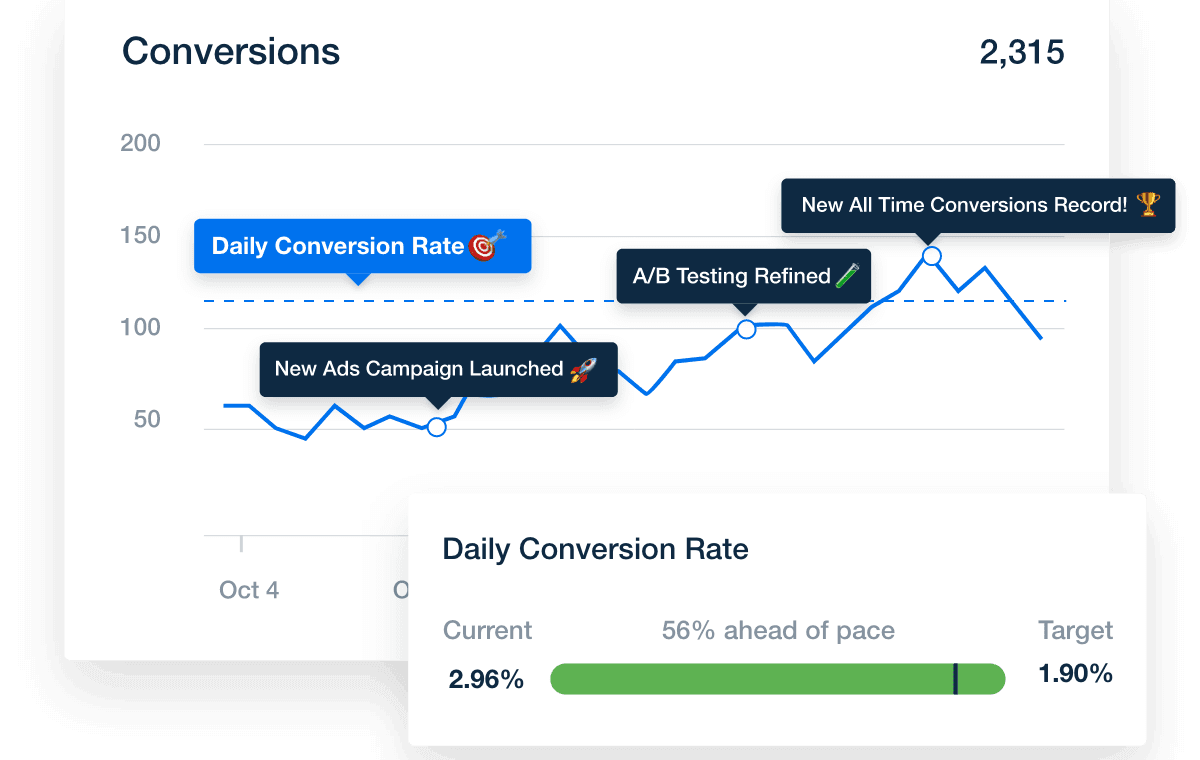
Boost client communication and engagement with annotations and goals in your client reports. Visually demonstrate your agency's value. Start your 14-day free trial today.
Unrealistic Demands
This is such a common scenario. Some clients disregard the original scope of work. Some go even further. They become aggressive in getting their way.
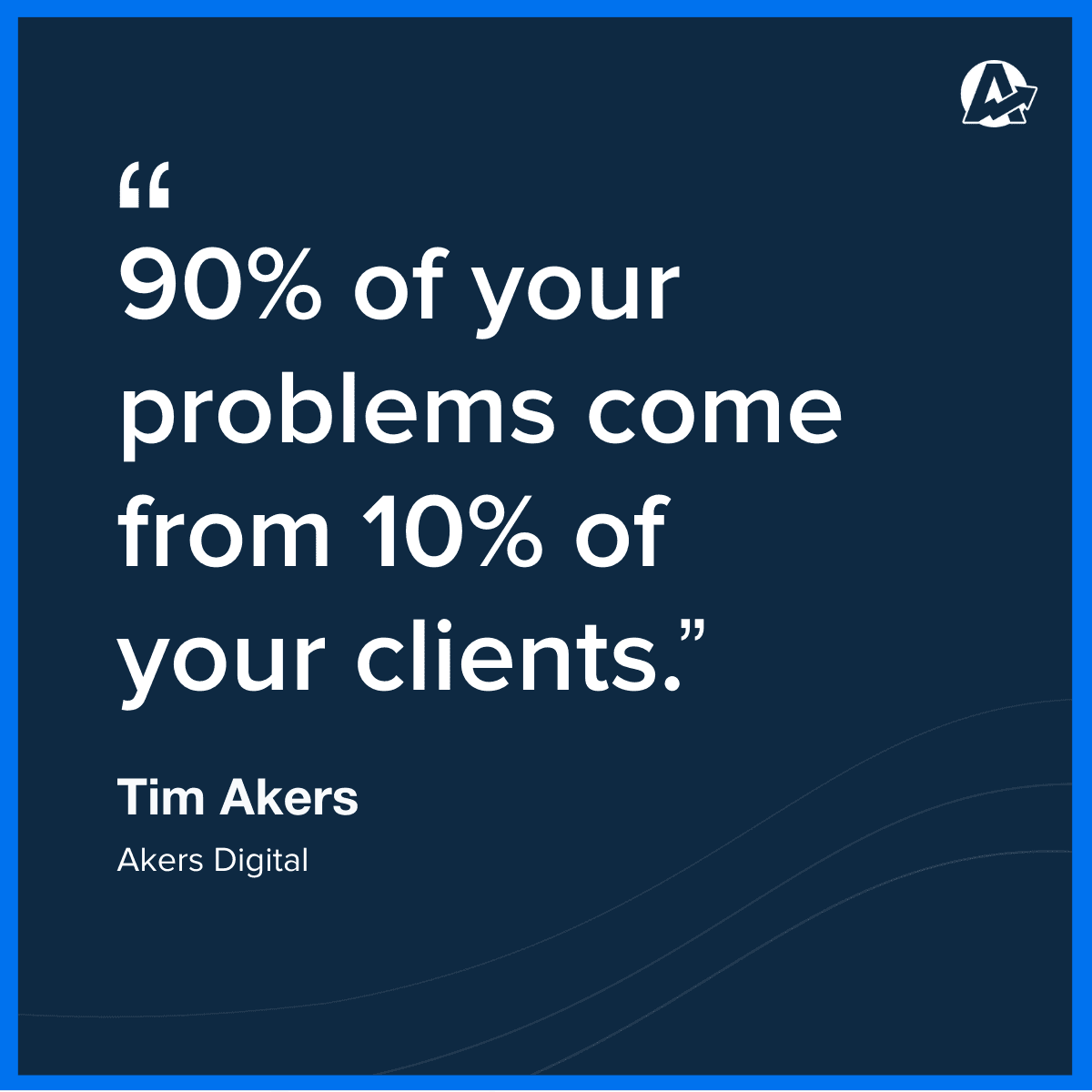
This problem client may threaten you and your staff. Block payments until you do what they say. Play the blame game.
And in turn, these difficult clients drop the company's morale down.
No Support for Projects
With these clients, you find yourself running in circles. They veto all of your ideas. But they never offer any insight to get the project moving.
The result: accruing more costs. And on many levels at that—your staff has to work on new ideas all the time, often while neglecting other valuable clients too.
A New Process That Generates More Cost
This scenario often happens when you subcontract with other companies. The process you've been using to work together changes. And the new one results in spending more time and money to deliver the work.
The client might require more meetings, or more revisions, forcing you to dedicate more staff to the project too.
The best example of a bad client was when a former client called us every single day to review the leads on the first week and would find a way to tie them back into him and how this isn't counted as our lead. He told us that because he sat next to the lead's grandad's next-door neighbor in church, that meant it was his lead and not ours. This was the end of that relationship."
- Ben Spray, Managing Director at We Are Marketable
Poor Anger Management
Abuse towards you or your team member. Bad temper. Attitude. None of these make up a great client either. And certainly, your staff shouldn't be subjected to any such behavior from nightmare clients.
We have a firm policy around mutual respect between our team and our clients. If we feel that line has been crossed, we unapologetically terminate that client by simply stating that we are no longer the right fit for each other. From there, we share all assets with the client and clearly outline any applicable next steps, and end the relationship.
- Brittany Woitas, Founder at Kōvly Studio
Late Payments
Nobody likes to chase invoices constantly. Not to mention struggling with the cash flow as a result. Although, in many cases, you can overcome this challenge, some clients remain bad payers. And sometimes, it may make more sense to replace them with someone else.
If any of the above happens to you regularly, it might be time to fire bad clients.
I can't think of any pros for keeping a toxic client. Even though it may make the invoiced sales figure higher, they will often withhold payment for petty reasons or even end up asking for a credit or compensation.
- Daniel Noakes, Founder of UClimb
How to Fire a Client
In this section, we'll discuss two things:
1. How to End the Client Relationship: We'll cover what you should and shouldn't do to avoid any unpleasant consequences for your agency. After all, you don't want any hassle from a toxic client after you let them go. People talk and work gets around.
2. How To Tell a Client You’ve Fired Them: This, by far, is often the trickiest part. We'll look at three approaches you could take here.
Here are the best ways to let them go.
How to End a Client Relationship
Here's what NOT to do:
Never Blame or Offend the Client
Even though bad clients might be at fault, try to push the blame somewhere else.
Do Not Fire Them Without Ending Their Project First
Or at least, without identifying the steps to hand it over to whoever is going to be working with the client next. Even if it's time to fire a client, make sure you tie up loose ends.
Don’t Ever Get Into Any Discussions About Your Decision
Make it final. As a business owner, it's not always easy to let go of a profitable relationship. Even if you've got a longstanding working relationship, stick to your decision. Remember, there's a reason why you've resorted to this decision.
Don’t Fire Them Over Email
You might consider firing a client this way. But meet with them face-to-face or have a phone call.
While email offers a written record and can be less confrontational, delivering this news through a phone call or face-to-face meeting is generally more professional and empathetic. This approach allows for immediate dialogue, addresses concerns in real-time, and demonstrates respect for the client.
However, if a client has been abusive or unresponsive, an email might be appropriate to maintain boundaries and ensure clear documentation. Ultimately, the method should be chosen based on the specific circumstances and the nature of the client relationship.
And here's what you SHOULD do:
Create the Final Task List for You and the Client
Include all things each side would have to do before firing a client. On your side, it could include the final tasks on a project, preparing documentation to hand it over, a list of assets, etc. On the client side, what documents do they need to sign off, remaining payments, etc?
Suggest Your Replacement
Recommend another agency, small business, or freelancer who you think could take over their business. Now, you don't have to make any recommendations when firing a client. But it's always worth helping them look for another agency. Call it good karma or whatever you want, it works.
How To Tell a Client That They’re Fired
We've already mentioned the best approach to fire a client: never blame them. Losing an agency might be stressful enough. Hearing that it's their fault might only aggravate them more.
So, take a different approach. Blame other circumstances, personal or business, instead.
You won't burn bridges this way. And who knows, your contact in the company might be gone in the future, and you may have a working relationship again in the future.
You'll also avoid leaving any negative attitudes towards your agency. The client will be less likely to shatter your online reputation in return.
So, what could you say instead to fire them?
3 Approaches to Ending a Bad Client Relationship
1. Mention a Change in Personal Circumstances
Let the client know that a new personal situation might prevent you from giving your fullest attention. Caring for their business, you prefer to recommend someone else to take over (like another business or freelancer).
EXAMPLE:
Hi [Client Name],
I wanted to let you know about a recent personal change that will limit my ability to provide the level of attention your business deserves. Your success is incredibly important to me, so I’ve arranged for a trusted colleague, [Name & Agency], to assist with your needs moving forward.
[Name] specializes in [specific services] and has a strong track record of delivering great results. I’ll ensure a smooth handover over the next 60 days and am happy to facilitate an introduction to make this transition as seamless as possible.
Thank you for the opportunity to work together, and I wish you continued success.
I've found that, in most cases, clients are quite understanding about this. They move on but retain a strong, positive attitude toward you.
We escalate to retention specialists, who try to reset the account. If this attempt fails, we offer to migrate the client to providers of their choice at no cost.
Dan Alper, VP at RankWorks
2. Changing Business Direction
Another option is to mention that you've decided to change the business focus. That way, it softens the blow and isn't as harsh as outright firing a client.
EXAMPLE:
Hi [Client Name],
I wanted to share some updates about my business. After careful consideration, I’ve decided to focus on [new area of focus], which means I’ll no longer be offering [specific services the client uses].
This decision wasn’t easy, as I’ve truly valued our partnership. To ensure your needs are met, I’d like to recommend [alternative provider or resource]. They are highly skilled in [specific services] and would be a great fit for your business.
I’m happy to assist with the transition over the next [time period] and answer any questions during this time. Thank you for your understanding, and I wish you all the best moving forward.
Give the client a viable explanation like moving to another industry, expanding your small business, or focusing on other services. However, for this approach to work, your new direction must sit outside of what the client would need you for.
After all, you don't want them to move with you.
I have an open conversation with them and tell them that on a business level, we can no longer work together as it's not beneficial to either party. I wish them the best for the future and we go our separate ways. Sometimes they try to come back but being honest and explaining the full reasons help both sides understand it's for the best.
- Ben Spray, Managing Director at We Are Marketable
3. Gradual Disengagement
Gradual disengagement involves slowly scaling back your involvement with a client while giving them time to adjust and explore alternative options. This approach can be particularly effective when the relationship isn’t overtly hostile but isn’t a good long-term fit.
EXAMPLE:
After reviewing our ongoing collaboration, I wanted to let you know about some upcoming adjustments to the scope of services I’ll be able to provide.
Starting [specific date], our agency will be transitioning to a more focused workload, which means I’ll need to scale back some of the [specific services] we currently handle. I want to ensure this transition is as smooth as possible for you, so I’ll continue supporting [key services] until [specific timeframe].
In the meantime, I’d be happy to recommend [specific resources or referrals] who can help you with [services being scaled back]. I’ll also make sure to document everything thoroughly and share the necessary details to assist with the transition.
Please let me know if you’d like to discuss this further or if there’s anything else I can do to make this process easier for you.
Gradual firing provides the client with a smoother transition, helps maintain professionalism, and keeps the door open for potential future collaborations.
4. Amend the Service Delivery Process, Making It Unsuitable for the Client
We'll admit this approach isn't as effective as the ones above.
But when firing a client, you may not want to use your personal life as the reason. And you can't claim to have changed the business direction. For example, if you're a highly specialized agency, providing one service to a single market already. Any such claim would make no sense then, right?
In such a case, amend your pricing or how you deliver the service to make it unsuitable for the client. And in turn, let them end the client-agency relationship instead.
EXAMPLE:
Hi [Client Name],
I hope you’re doing well. I wanted to let you know about some changes to my agency's service offerings. Moving forward, I’ll be focusing on [describe new structure or pricing model], which may not align with the current scope of work we’ve been doing together.
Given these adjustments, I believe it might be in your best interest to explore options that better match your specific needs. If helpful, I can recommend [alternative provider or resource] who excels in this area.
It’s been a pleasure working with you, and I want to ensure this transition is as smooth as possible. Please let me know if you have any questions or need assistance in the coming weeks.
Now, we must warn you. This approach could backfire if they agree to new prices or processes. So, use it with caution.
Or perhaps, only when you're not 100% certain you want to fire a client.
We increase our prices to include the cash-chasing time, the time it takes to answer low-trust queries, etc. Also, while we always try to under-promise and over-deliver, we take this to extremes once we pick up a client who is a 'toxic' type. Generally, this combination of increased prices, requests for upfront payment (if there have been payment issues), and reduced promises about what results will be achieved, leads to them walking away of their own accord.
- Daniel Noakes. Founder of UClimb Ltd.
5. Ending the Relationship with Professional Transparency
Although this goes against some of the best practices we outlined earlier, sometimes the most effective way to end a client relationship is by directly addressing the situation with honesty and professionalism. This approach works well when there’s a clear misalignment of goals, unmet expectations, or a lack of fit between your services and the client’s needs.
EXAMPLE:
I wanted to reach out to discuss our ongoing collaboration. After careful evaluation, I’ve realized that my current capacity and focus areas may no longer fully align with the goals we’ve set together. To ensure your business continues to receive the level of attention and expertise it deserves, I believe it’s best to transition our partnership at this time.
This decision wasn’t made lightly, as I’ve truly valued the opportunity to work together. My priority is to support a smooth transition, so I’d be happy to recommend [alternative resources, freelancers, or agencies] who may be better suited to meet your needs. Additionally, I’ll make sure to finalize any outstanding work and provide all necessary documentation to assist during this period.
Thank you again for the trust you’ve placed in me. I’m confident that this step will ultimately set both of us up for success, and I wish you all the best moving forward.
To navigate this approach without blaming the client, focus on your perspective, processes, or business direction rather than their shortcomings. By emphasizing your own limitations or changes, you can end the relationship on a neutral, non-confrontational note while still being transparent.
Conclusion
Firing a client isn't easy. The emotional weight of such a business decision can be heavy. But at the same time, toxic client relationships could affect your agency's growth.
That's why, sometimes, you have to make the tough call and recognize when it's time to let go. It's the only way to preserve your culture and find clients that are a better fit. But hopefully, you've just gained some insight into how to do this without any consequences to your agency. Good luck!

Written by
Joe is the co-founder and CEO of AgencyAnalytics, a marketing reporting platform used by more than 7,000 agencies. With experience creating multiple businesses, he thrives on tackling the challenges of sustainable growth and innovation.
Read more posts by Joe KindnessSee how 7,000+ marketing agencies help clients win
Free 14-day trial. No credit card required.



